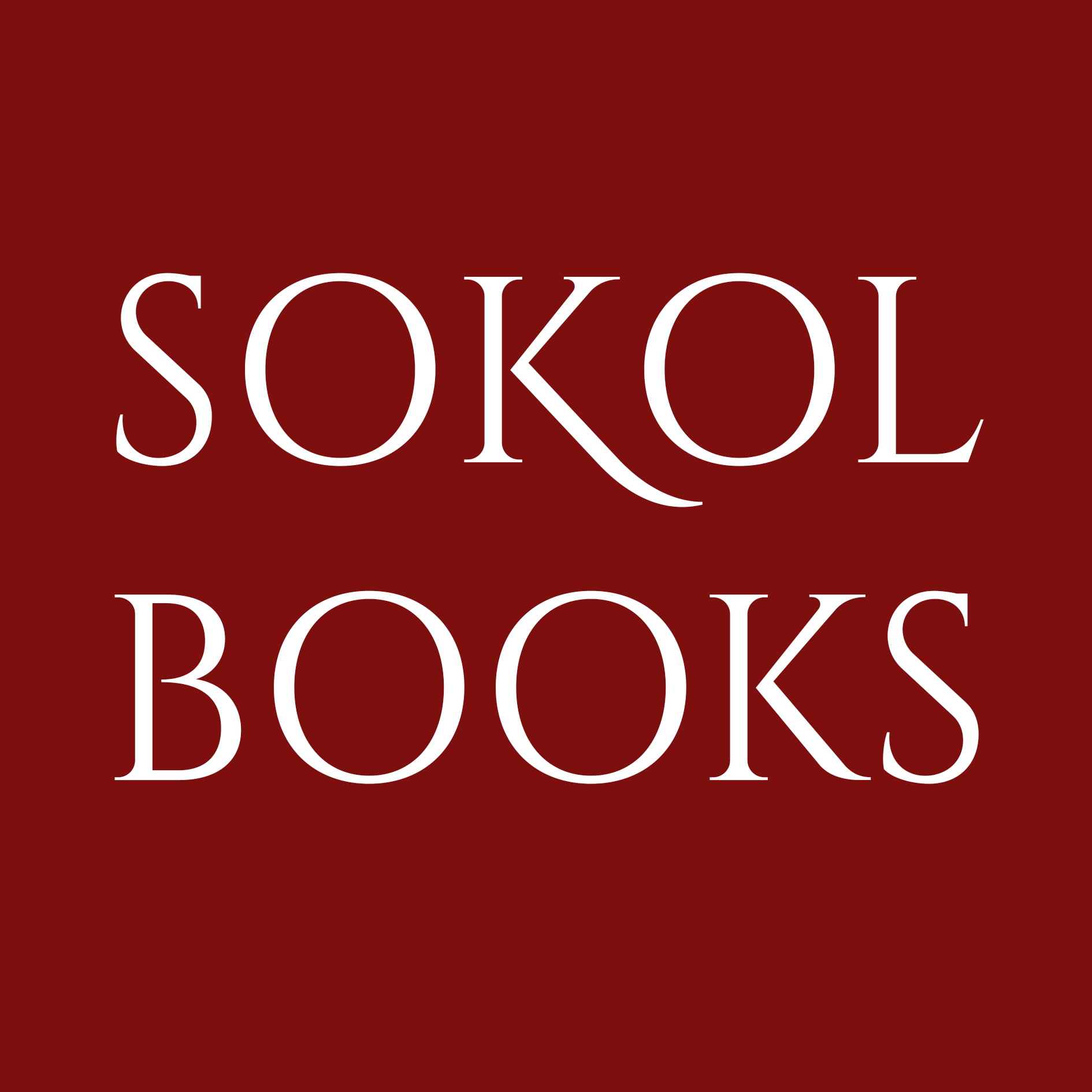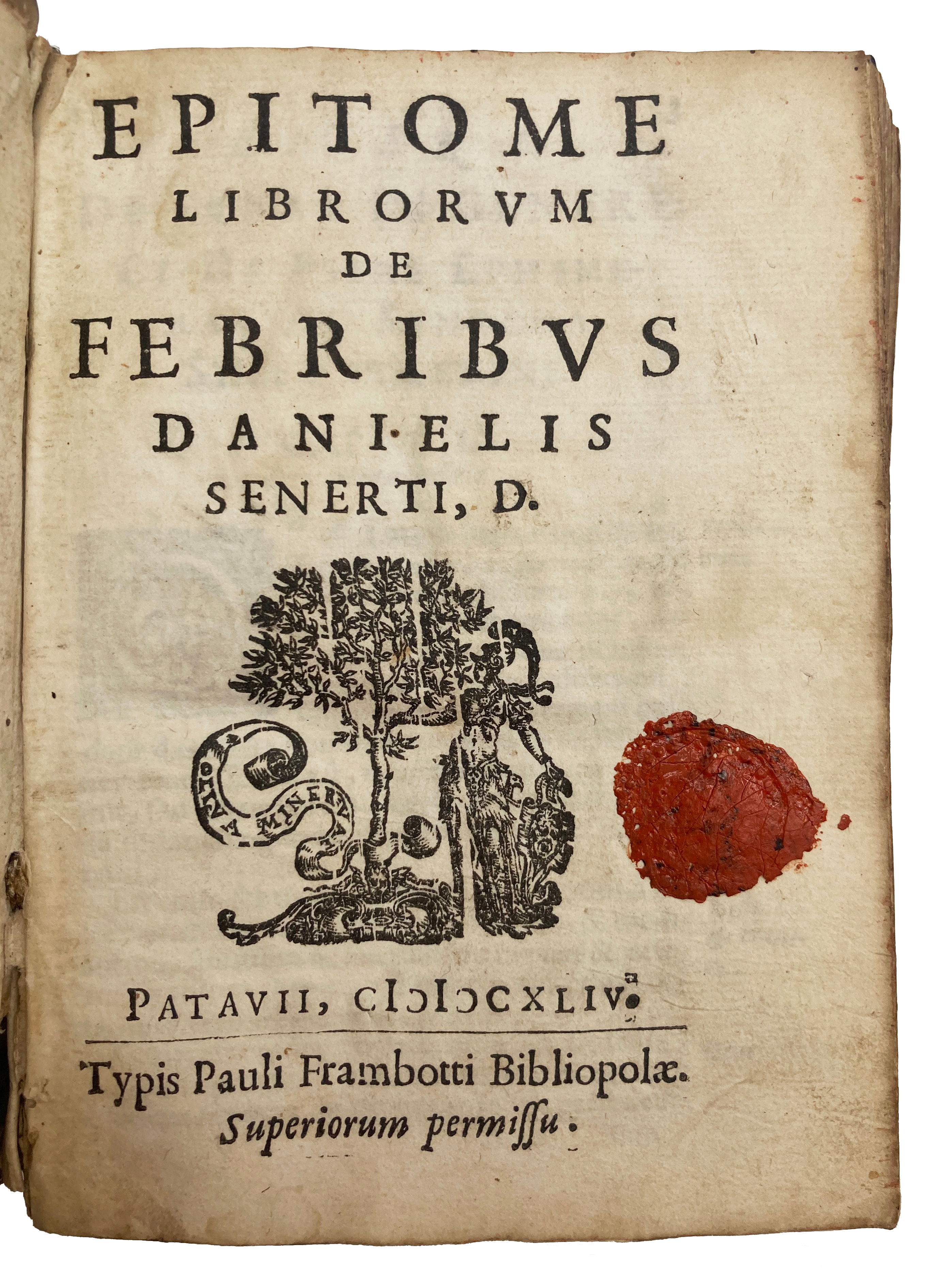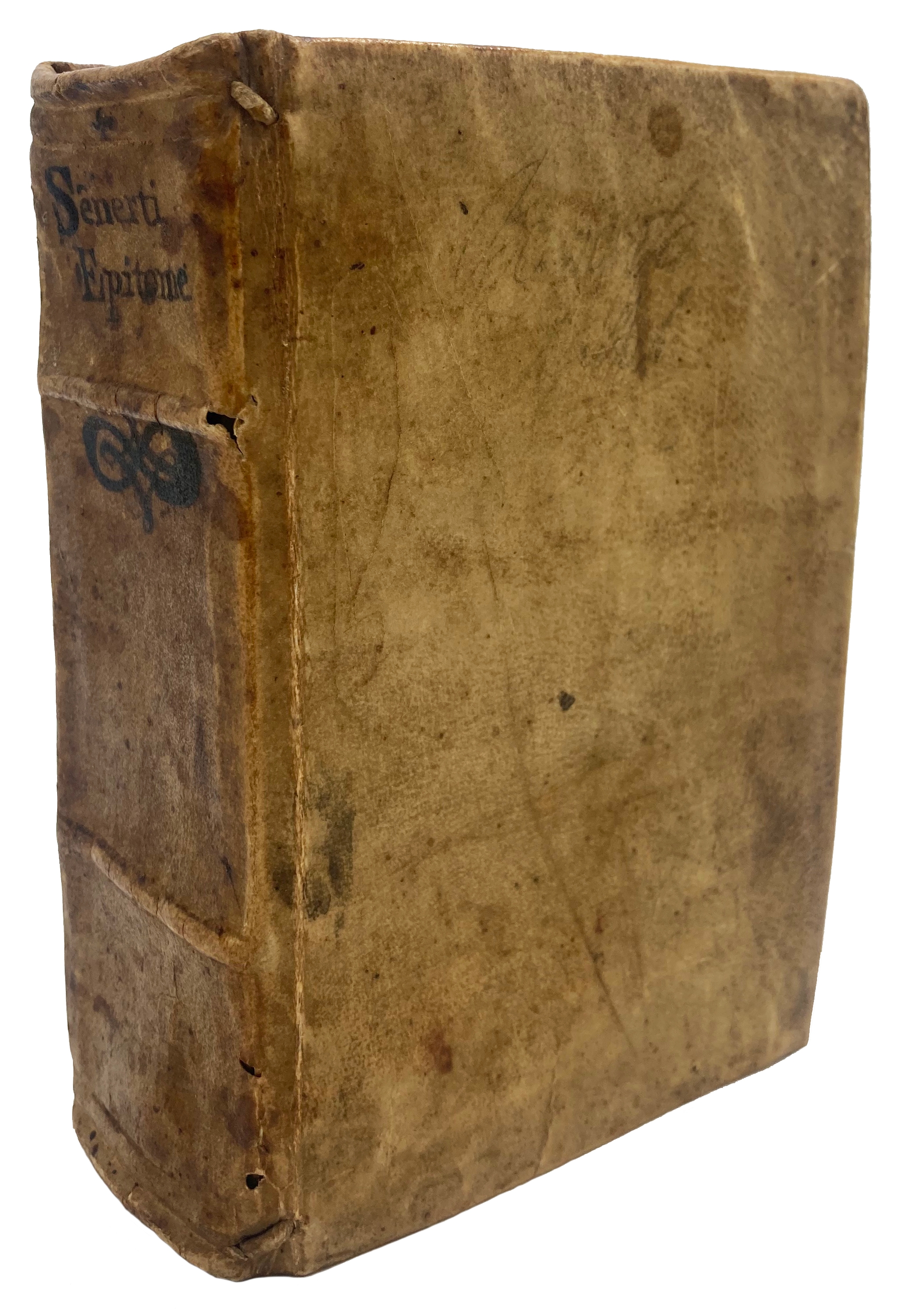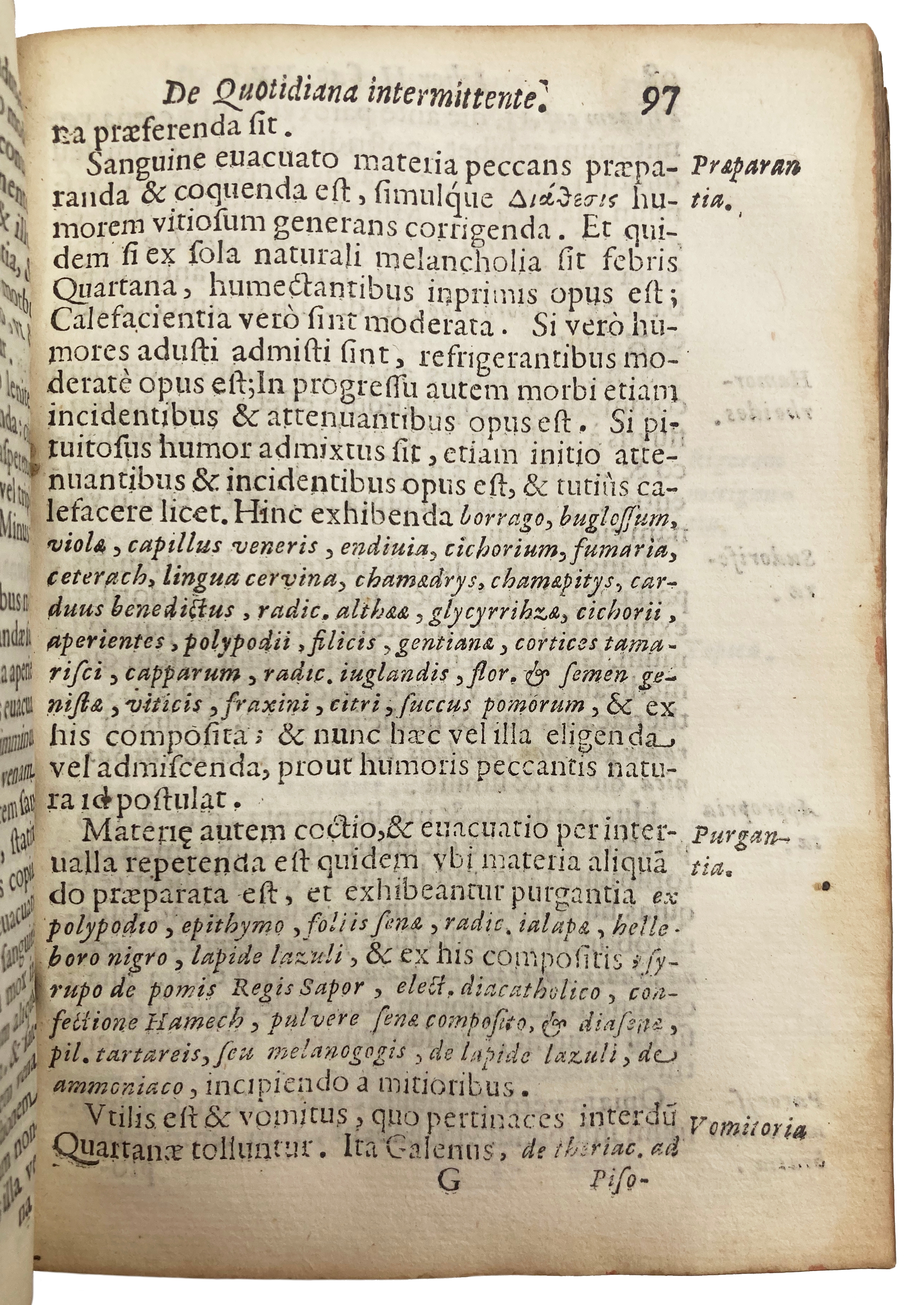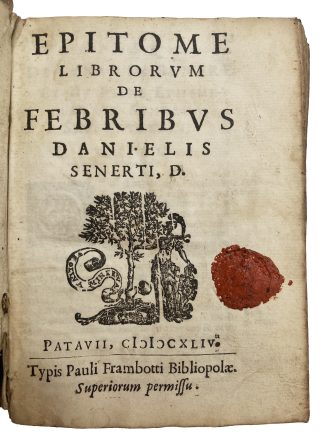SENNERT, Daniel
WITH A SECTION ON TOOTHPASTE
Epitome Librorum de Febribus.
Padua, P. Frambotus, 1644.£1,950.00
Small 8vo. 3 parts in 1, second with separate pagination, third (index) with separate title and pagination, pp. 169, [7], 624, [52]. Roman letter, little Italic or Greek. Printer’s device to first title, title of third within typographical border, decorated initials and ornaments. Light age yellowing. A good, unsophisticated copy in contemporary vellum, early ms title to spine and lower edge, ‘Doctoris Joannis Videmarij Medici et Chirurgi 16’, red wax stamp to first title, ms note beginning ‘patria mea…’ 1812 to rear ep.
A rare, later edition, printed for students at Padua, of this important medical work devoted to fevers and general medical theories. First published in 1595 and reprinted several times, it survives nonetheless is less than a handful of copies for each ed. Daniel Sennert (1592-1637) was a German physician and professor at Wittenberg. He was a keen alchemist and supporter of an early atomic theory, halfway between the Aristotelian view and corpuscularianism. ‘Epitome de Febribus’ is an encyclopaedia on fevers, which begins from their nature and causes, and moves to a detailed study of the symptoms and prognosis of all kinds, e.g., ephemeral, pestilential (and how it differs from the plague), putrid, quartan, tertian, and so on. For each, Sennert provides advice on the most appropriate ‘regimen sanitatis’, as well as helpful treatments. A section is devoted to the ‘morbus Ungaricus’, a malignant and contagious fever which originated in Hungary and spread throughout Europe in 1566. ‘Epitome Institutionum Medicinae’, the second part, is a compendious introduction to the art of medicine, including its basic definitions and physiological theories (e.g., humours, spirit, intellect), why illnesses occur and what their main kinds are, body temperature, urinoscopy, signs of ‘crisis’ (the critical moments when an illness worsens), melancholy, and types of medicaments. A section is devoted to ‘dentifricia’ (toothpaste) to whiten and clean teeth in the form of liquid, powder or ointment; another to perfumes. The third part comprises a thorough index, with a separate title, which was probably also sold separately to students.
Giovanni Videmari (fl. early C18) was physician and surgeon in Varese, Lombardy. He owned a very fine numismatic collection and worked in Milan.
USTC 4017794; Durling (earlier eds); Wellcome (earlier ed.). Not in Heirs of Hippocrates or Osler.